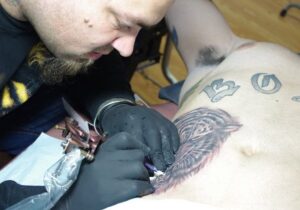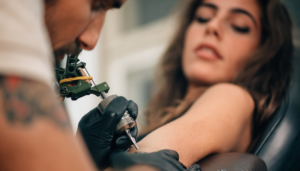Piercings have long been regarded as a form of self-expression and cultural symbolism. They are more than just decorative accessories; they often carry deep personal meaning for the wearer. In many societies, piercing practices are linked to rites of passage, spiritual beliefs, or social status, making them a powerful symbol of identity and resilience.
Today, piercings continue to evolve as a fashion statement and a way to showcase individuality. For many, choosing a specific piercing is a deliberate act that reflects their inner strength and uniqueness. It’s a bold way to communicate confidence and embrace one’s innermost self.
Cultural Significance of Piercings
Throughout history, different cultures have used piercings to signify wisdom, maturity, or social rank. For example, the Eskimo tribes traditionally pierced their noses as a symbol of adventure and resilience. Such practices often required considerable courage and acceptance of pain, making them a testament to inner strength.
In many African societies, facial piercings are a mark of identity and tribal affiliation. These adornments serve as symbols of resilience, belief, and communal belonging. Embracing these customs demonstrates a reverence for heritage and the resilience needed to preserve cultural traditions.
Modern cultural expressions also incorporate piercing as a form of resistance. For many, piercing is a way to challenge societal norms and expectations, showcasing their bravery in defying conventional standards. It becomes an emblem of empowerment and personal freedom.
Types of Piercings That Convey Strength
Certain piercings are widely recognized for their association with strength and resilience. The ear cartilage, for example, is a common site of piercing that requires a higher level of commitment and care. Wearing such piercings often symbolizes enduring adversity.
Nasal piercings, especially septum piercings, have long been associated with courage and defiance. Historically, they signified warriors or individuals willing to confront challenges head-on. These piercings serve as reminders of resilience and the ability to overcome obstacles.
The industrial piercing, which passes through two points on the ear, is viewed as a modern symbol of boldness. Its placement and visibility are deliberate, serving as a statement of inner strength and individuality that resonates with those seeking to express their resilience.
Motivations Behind Piercing Choices

For many, piercing is a way to commemorate personal milestones or triumphs. It can symbolize overcoming hardships or embracing a newfound sense of confidence. These choices are often deeply personal, representing inner growth and strength.
Others choose piercings to make a statement against societal pressures. By displaying visible piercings, individuals assert their autonomy and strength in maintaining their identity in the face of adversity. It’s a form of silent resilience and defiance.
Some people are motivated by a desire to connect with spiritual or philosophical beliefs. Piercings can serve as physical reminders of their values, resilience, or spiritual journey, emphasizing their inner resolve and strength throughout life’s challenges.
Personal Stories of Strength Through Piercings
Many individuals share stories of how their piercings helped them heal emotionally after difficult times. A symbolic piercing can serve as a memorial or a sign of overcoming particular struggles. These narratives highlight the different ways piercings foster empowerment.
For some, piercing was a leap of faith, demanding courage and trust in oneself. These experiences often mark turning points in their journeys toward inner resilience, inspiring others to embrace their own challenges with bravery.
There are stories of people using piercings as a tangible reminder of personal transformation. Such stories underscore the role of body modifications in reinforcing self-acceptance and inner strength, showcasing how outward appearances can reflect internal resilience.
Piercings as a Form of Self-Empowerment

Choosing to get a piercing can be a powerful act of self-empowerment. It often signifies taking control of one’s body and identity, standing firm against external judgments. This act embodies personal resilience and confidence.
For many, piercings are a way to reclaim their story and assert their autonomy. They serve as visible symbols of their inner strength, reminding them of their ability to face challenges and remain true to themselves.
Additionally, piercing can foster a sense of community among those who share similar styles or beliefs. This collective identity reinforces inner resilience and provides support in expressing their authentic selves.
The Role of Pain and Courage
The process of getting pierced often involves pain, which can be a profound symbol of inner strength. Enduring discomfort for the sake of personal expression highlights resilience and courage.
For many, overcoming the initial fear of pain is a reminder of their capability to face life’s challenges. It transforms the act into a celebration of their inner fortitude and determination.
Pain-associated piercings can become lifelong symbols of resilience. They serve as a physical reminder of their perseverance and the inner strength needed to endure adversity.
Conclusion
Piercings are much more than adornments; they are powerful symbols of inner strength, resilience, and individuality. Choosing to wear certain piercings often reflects a journey of personal growth, courage, and cultural heritage.
Ultimately, piercing ideas that symbolize inner strength serve as an empowering reminder that embracing one’s true self requires bravery and resilience. These adornments highlight the beauty of inner courage, inspiring others to find strength in their own expressions of identity.






